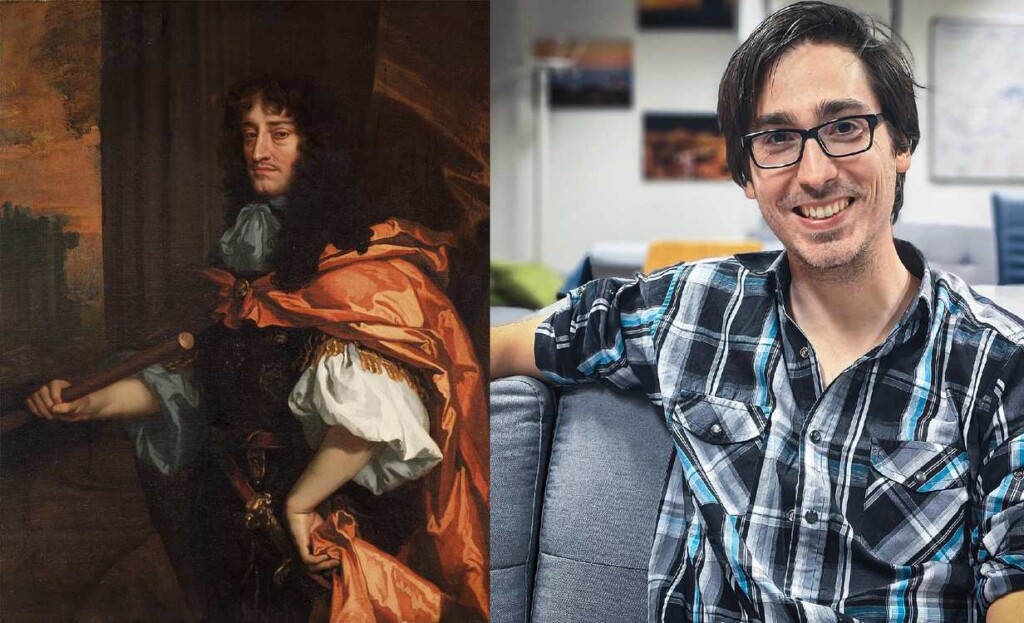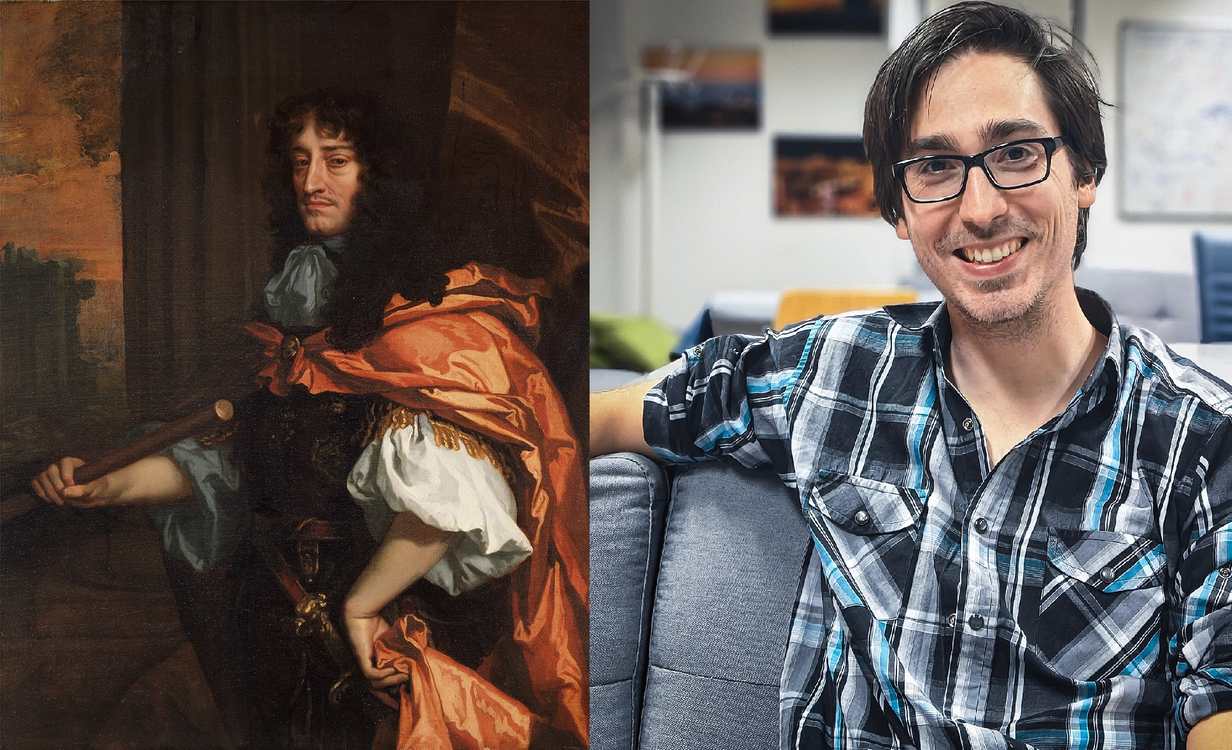 Prince Rupert (left) and Jakob Steininger (right) credit, released as a courtesy of Mr. Steininger
Prince Rupert (left) and Jakob Steininger (right) credit, released as a courtesy of Mr. Steininger
A pair of European mathematicians have proven a 300-year-old inference on shapes wrong, and won a bet on behalf of a long-dead Englishmen who got into a famous argument with his prince.
The story begins with an experiment: take two gaming dice, put one on top of the other, now think if you could position one in such a way that the other could pass through it without touching the sides.
If your suggestion is that no such thing could be possible, than you took the losing side of a bet made 300 years ago between Prince Rupert of the Rhine—a nephew of Charles I of England, and the mathematician John Wallis.
Rupert, who had studied glassmaking and metallurgy, proved to Wallis that if you tilted a cube on its side and bored a hole towards its inner diagonal, you could slide the second cube through even if they were the same size, though historians aren’t sure if he actually drilled a hole through a gambling die.
Wallis later produced this theorem with a proper equation, which would come to be known as the Rupert tunnel, or the Rupert property. In 1968, scientists reproduced this concept with much more complex shapes than a cube: such as a tetrahedron and octahedron, or for Dungeons & Dragons players, the 10 and 8-sided dice.
In 2017, a team of mathematicians proved that even more complex shapes, the dodecahedron (a D12) and the icosahedron, the shape that makes up both the soccer ball and the D20, have the Rupert property—which to reiterate means that there exists a way of tilting one of two equally-sized shapes in such a way that would allow a second to pass through a hole created through the first.
Quanta Magazine’s Erica Klarreich reports that some shapes have incredibly tight fits, with one kind of tetrahedron for example passing through a space 0.000002% the size of the shape. Tight or not, every shape tested has been able to pass through.
But now, in a discovery that will have Rupert’s bones rattling in their coffin, modern mathematicians have produced a shape without the Rupert property.
Jakob Steininger, a mathematician at Austria’s federal statistics organization, and Sergey Yurkevich a researcher at A&R Tech, an Austrian transportation systems company, recently unveiled the “Noperthedron,” a made-up word that blends “Rupert” with “Nope.”
This 180-sided object cannot fit through another like it, no matter where you bore the hole or how you tilt it.
Tom Murphy, a software engineer at Google who has explored the question extensively, told Klarreich that he has created hundreds of millions of shapes through computer programs which have found Rupert tunnels through almost all of them. “Nopert” candidates are extremely rare, she writes, and the question of whether they’re true Noperts or whether the computer program can’t run tests on every possible position that exists to place a shape, is actually—even in this age of quantum computers and AI—difficult to tell.
ALSO CHECK OUT: Mathematicians Discover Elusive ‘Einstein’ Shape: ‘The Miracle that Disrupts Order’
Enter Steininger and Yurkevich, two childhood friends entering their third decades of life who saw a video of a cube passing through a cube in 2021 and were instantly interested in the problem.
The scope of their innovations will not be regaled here, but remains on Quanta Magazine for those who want to read more. The easiest way to find out whether shapes possess the Rupert property is to hold them both under a light. Tilt one shape until its shadow casts over the broadest possible space, and then try to fit the other shadow inside.
MATHEMATICIANS PROVING THINGS: Teens Say They Have New Proof for 2,000-Year-Old Mathematical Theorem, a Method Scholars Thought Impossible
This was the basis for the calculations in the computer simulations of Steininger and Yurkevich’s eventual breakthrough. They developed a pair of theorems—one global, and one local—which would isolate each point of the shadow and help the program compartmentalize possible violations to the Rupert property. Eventually, the pair designed a shape that looks a little like a flower vase, which according to both the global and local theorem, could not fit through itself.
Consisting of 150 triangles and two, regular 15-sided polygons, the shape is a true Nopert—the first of its kind ever to be discovered and confirmed. It took 18 million examination blocks for the program to rule out every possible position that the shapes might take.
BEAUTIFUL CHALLENGES SOLVED: Father-Daughter Duo Won the Race to Decode an Extraterrestrial Message–Sent from Mars to Test Humanity
Having overruled the age-old judgement, the pair, who solved it in their spare time, say they will keep on the lookout for other problems.
“We’re just humble mathematicians—we love working on such problems,” Steininger said. “We’ll keep doing that.”
WATCH 26 Rupert shapes in action below…
SHARE These Geniuses And Their Resolution To A 300 Year Old Quandary…

